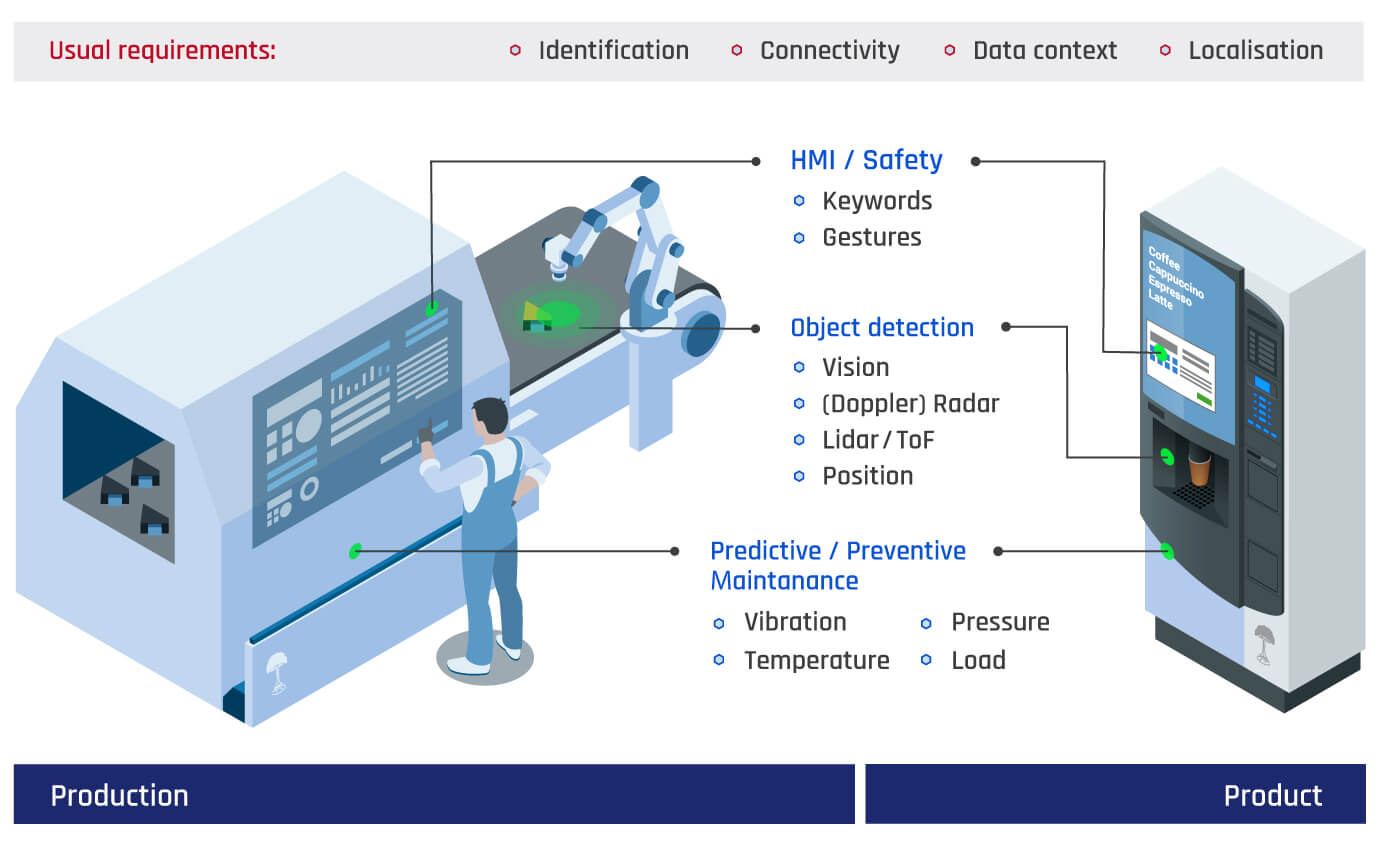
Embedded AI
in industry
The business area of embedded AI in industry deals with the embedding and application of Machine Learning in production processes and technological products. The degree of penetration of AI in an industrial context is still rather low, but there is a large potential as it allows significant time and cost savings in production. At the same time, new (security) functions add value to the products or redefine them completely.
Examples of technological enhancements are reliable speech recognition even in adverse environments and path or workpiece monitoring by camera systems. Another possible use case is the analysis of user motions.
Predictive maintenance is another area: by Machine Learning-based detection of anomalies in consumption or vibration patterns, breakdowns can be precisely predicted and avoided. An early warning via the network prevents expensive downtimes.
The innovative products and production functions can give rise to new data-driven business models for our customers (e.g. pay per use). This enables the companies to efficiently monetize the added value and to remain competitive in the global price war.

Individual AI technologies, e.g.:
- Image, radar or lidar detection for workpiece or production flow analysis
- Keyword recognition for security systems and product operation
- Motion/gesture recognition for security systems, operation, sorting and pose detection of products and workpieces
Individual AI technologies, e.g.:
- Image, radar or lidar detection for workpiece or production flow analysis
- Keyword recognition for security systems and product operation
- Motion/gesture recognition for security systems, operation, sorting and pose detection of products and workpieces
- Measurements that may be used for predictive or preventive maintenance (P/PM) monitoring by means of AI.
- Example components for monitoring: electric motors, mechanical actuators, cables, temperature or pressure gradient of processes
- Objective: disruptive (data-driven) product business models by early service planning or prevention of expensive production downtimes.
- Frequent conditions in which we help our customers in many ways through the integration aspects of our overall package.
- g. Wi-Fi modules in products for P/PM or identification for workpiece mapping
- Required for some of the innovations and business models of the customers beyond AI.
- In cases like these, we will also gladly support you or refer you to our partners.

The required algorithms and models always run on the Embedded control on-site at the edge. Hence, no outside connection to the cloud or a larger data center is required. This complies with important and mandatory requirements of our customers, e.g. data protection, low latency and high security.
As a holistic partner, we at AITAD accompany our customers from the very beginning, i.e. from the evaluation of possibilities to the delivery of custom-fit systems. Due to our technological infrastructure comprising a development lab, automated production lines and simulation environments, we can quickly develop custom-made complete solutions.
Project stages
Consulting
Objectives
Analysis, definition and conception of the project
Elements
- Development and analysis of requirements and individual customer requests
- Preparation of technological impulses and integration opportunities
- Evaluation of possible new business models and visions
- Concretizing and validation of conceptual possibilities (costs, benefit, time, impact)
Development
Objective
Technical implementation and functional adaptation of the required system components
Elements
- Multi-step prototype stage involving test coworkers or test customers
- Proof of concept of individual technological tools based on accumulated ML data
- Partial integration with the existing system environment or manufacturing steps
- Iterative implementation and adaptation of the development
System integration
Objective
Series-production readiness after overall coordination, tests and the final development cycles
Elements
- Collection and preparation of critical data for ML algorithms
- Strengthening of robust designs after BOM review, quality tests and measuring (among others for certification)
- Communication with and specifications for applicative service providers (e.g. SAP interfaces)
- Consideration and implementation of required standards or safety regulations
Delivery / product support
Objective
Personalized delivery and agile product support
Elements
- Flexible in-house manufacturing of small series or production systems
- Establishment of suitable, economically viable supply chains with partner companies (quality tests and batch inspection by AITAD)
- Continuing technical support for products and production processes, among others by providing updates and advanced versions
